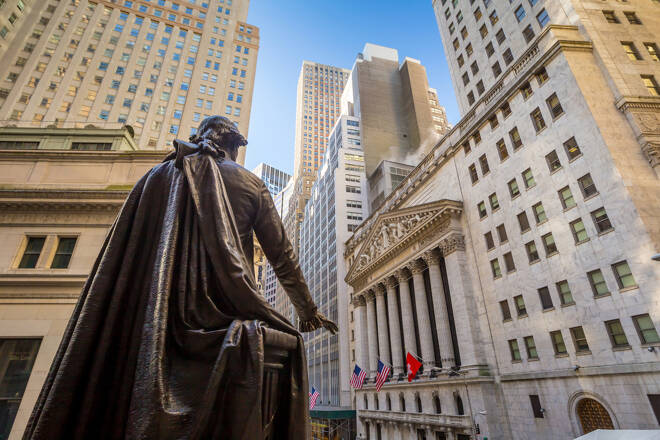Advertisement
Advertisement
What Do Traders Have to Know About Inflation?
By:
Stock markets remain volatile as traders see two significantly different scenarios in the road ahead, i.e., a US Fed that is turning from dovish to more hawkish.
And a world where Covid concerns were moving into the rear-view mirror is now back out in front of us with more unknowns regarding the new South African variant.
Federal Reserve
Federal Reserve Chair Jerome Powell signals a more hawkish stance amid the relentless climb in U.S. inflation. Given the current economic backdrop, Powell told the Senate Banking Committee that it would be appropriate to speed up its asset “taper” process. That, in turn, implies that the Fed could begin lifting interest rates sooner than Wall Street has been anticipating, with some analysts thinking two or even three rate hikes could be on the table for 2022.
Powell also said it was time to “retire” the use of the word “transitory” to describe inflation as he admitted that the “risk of higher inflation has increased.” A decision on the Fed’s taper schedule will be made at its December 14-15 policy meeting, which Powell noted will be influenced by upcoming readings on employment and inflation.
Data to watch
These include the November Employment Situation due out this Friday, December 3, and the Consumer Price Index coming up on December 10. Powell’s change in tone on the inflation front comes as investors are still struggling to understand what, if any, threat the new Omicron Covid variant might pose to the economic recovery.
One of the top concerns is how another outbreak or wave might impact the labor market and the global supply chain. The worry is that the new risk could sideline more workers, in turn forcing employers to raise pay ever higher and fanning the inflation flames to even greater heights.
This sort of dynamic is sometimes called a “wage-spiral,” when rapidly rising wages lead to rapidly increasing demand, causing the cost of goods to rise, leading to demands for higher wages, etc., creating a seemingly endless “spiral” upward.
In theory, it works much like the type of inflationary bubbles that many see stemming from excessive government stimulus and/or excess money supply. Of course, there is very little that researchers do know about Omicron at the moment, so speculation about worst-case scenarios is likely running high. With the Fed now seeming to be headed toward an earlier end to its supports, the landscape ahead looks dramatically different than what it did just last week.
It makes sense that some investors may choose to lock in gains, bank profits and step to the sidelines until the storm clouds pass.
Today, Powell will be back on Capitol Hill for the second day of testimony, though he’s not likely to cover any new ground.
In economic data, ADP’s private payroll report for November is expected to show a gain of +525,000, a slight dip from October but in line with what’s expected in Friday’s official jobs report.
Some Wall Street insiders are worried that if job gains come in much higher than anticipated, it could harm stock prices as it would give the Fed justification to end its supports even quicker.
Other data today includes ISM Manufacturing, Construction Spending, and the Fed’s Beige Book.
On the earnings front, CrowdStrike, Snowflake, and Stellantis are today’s highlights.
Many US stocks valuations are priced to perfection, and all of a sudden, we are in a place with a lot of uncertainty as the Fed tries to turn their giant ship around, and the new Covid variant could create some added wrinkles.
About the Author
Inna Rosputniacontributor
Inna Rosputnia has been involved in the markets since 2009 and is the founder of https://managed-accounts-ir.com/
Advertisement
